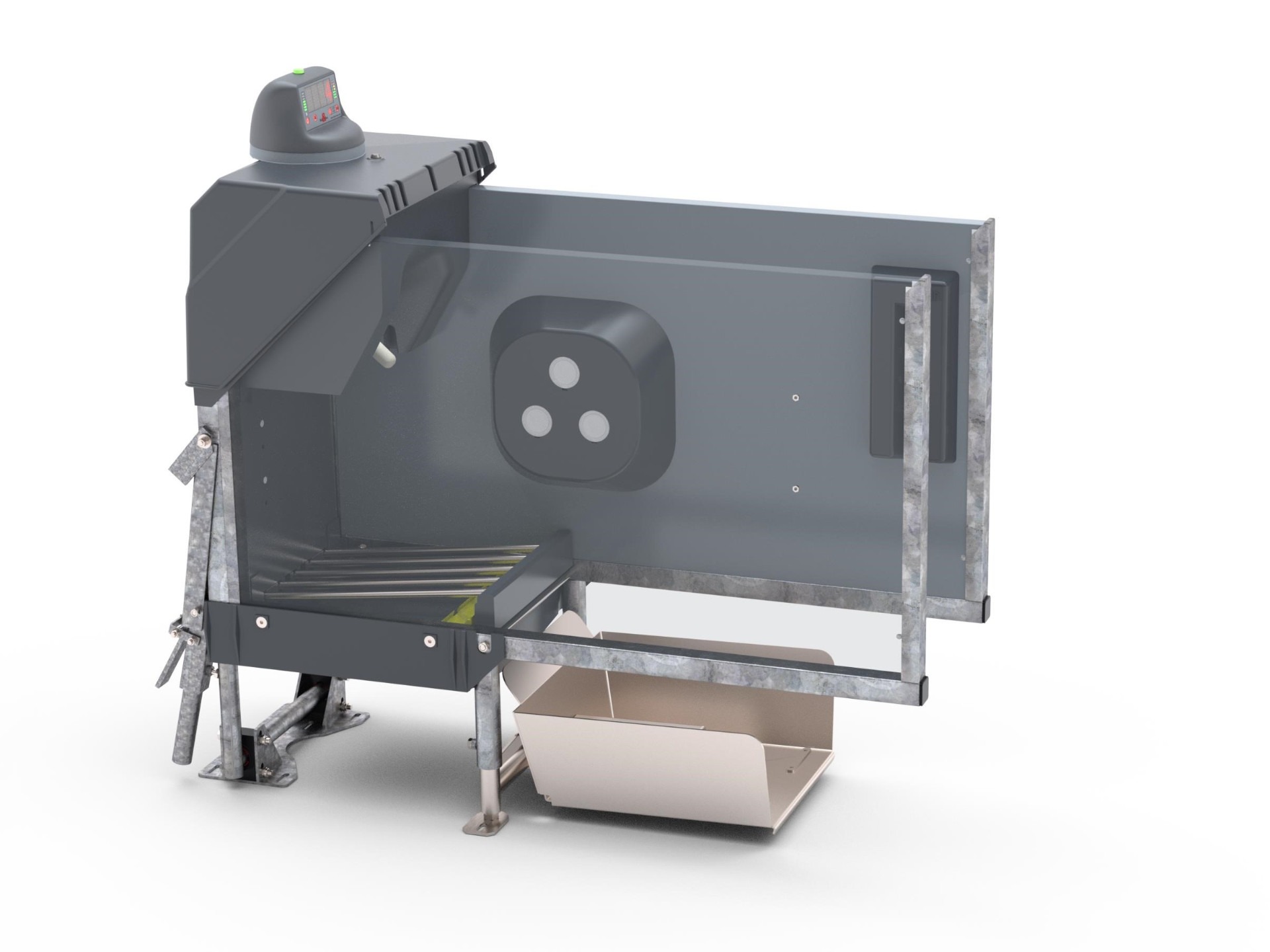New hygiene standard for automatic calf feeders
Many vets fear disease transmission at the teat when using calf feeders. This is where the HygieneStation from Holm & Laue sets THE new standard: cleanliness in the calf feeder is always ensured through teat cleaning and saliva tray rinsing. Extensive features and accessory options also ensure good calf development and make work easier for all those involved in calf management: animal weighing scales that collect important information, a display that shows the calf number from a distance, an ammonia sensor and the milk dispensing valve, to name just a few.
Ideal calf health
The greatest bacterial concentration in the calf pen occurs where all calves collect their milk several times a day. The HygieneStation ensures improved cleanliness here.
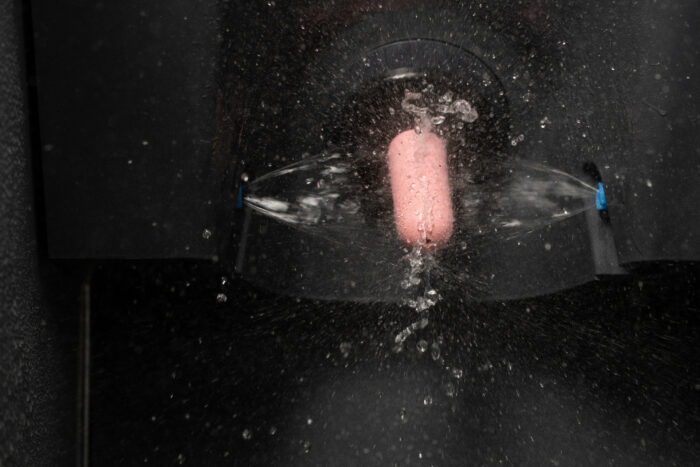
A clean teat at all times
With the new HygieneStation, the teat is cleaned from the outside with pressure and fresh water after every visit. Bacterial contamination on the teat accordingly drops by 80%.
Our new PinkTeat creates the best conditions for healthy digestion with its small 3 mm opening (instead of 4 mm previously). Calves feed more slowly and produce more saliva with a drinking rate of only 600 ml per minute. This promotes digestion and minimizes reciprocal suckling, as the sucking reflex is satisfied here at the teat.
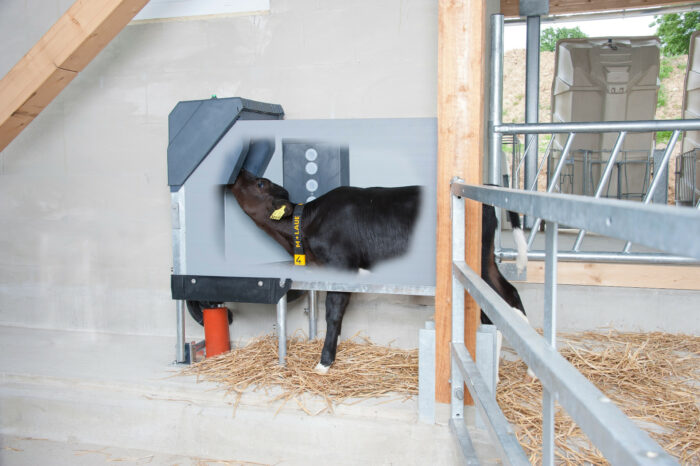
Natural drinking approach
The teat at the feeding station is positioned so that it slants downwards in a similar way to the teats on the suckler cow. This encourages the natural drinking position of the calf. When the head is stretched, this encourages the natural reflex of the esophageal groove and reduces the risk of milk passing into the rumen.
Cleaned saliva tray
Every calf produces saliva when drinking. With the HygieneStation this is collected together with the cleaning water of the teat in a mucus bowl and washed away after each feeding process. This means that the floor area within the feeding station stays clean and dry.
LED teat lighting
Practice has shown that the calves can orientate better when the teat is illuminated. Milk consumption increases at night and the feeding processes are distributed more evenly over a 24-hour period.
Reduced workload
For many dairy farmers, a reduced workload is one big argument in favor of calf feeders. The HygieneStation also makes work easier in a number of ways.
Calves teach themselves
As soon as a calf lifts the teat, a small amount of milk flows into its mouth. This stimulates the calf’s initial drinking impulse; manual learning is necessary in only exceptional cases. Should manual learning still be necessary, milk can be pumped into the teat by pressing a key.
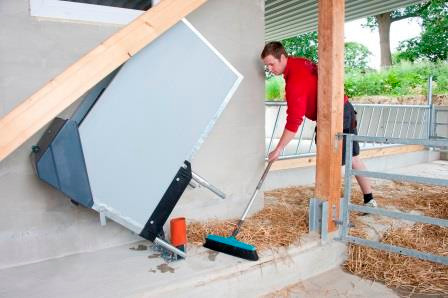
Can be tilted to clean
Many feeding stations are installed directly in the pens. The HygieneStation can be tipped forward at an angle of 90° to facilitate mucking out, and the whole area can easily be cleaned.
Control according to weight
All dairy farmers wants their calves to gain plenty of weight. Yet weighing calves is strenuous and requires a lot of discipline. Animal weighing scales at the HygieneStation collect important information quite incidentally.
Individual weaning
The CalfExpert records the daily growth of calves using the forefoot weighing scales. Calves that grow quickly can start feeding concentrate and hay at an early age and can thus be weaned off milk early on the basis of their individual weight development. This supports the development into a ruminant and saves money.
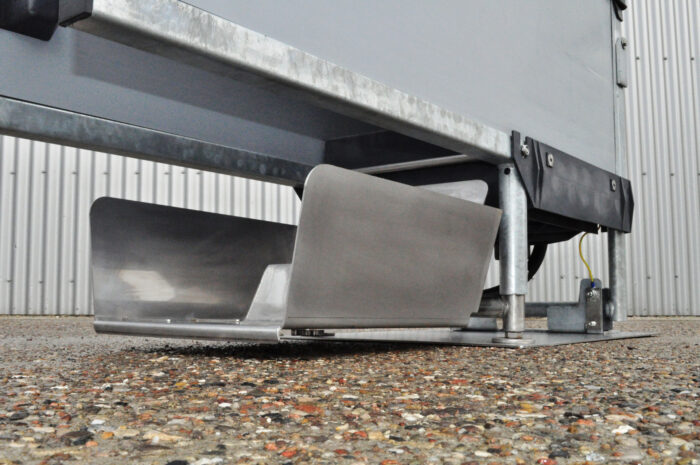
Better control
The animal weighing scales not only detect growing calves, they also register a decline in growth. This information is used to keep separate alert lists and helps identify sick calves at an early stage. Thus they can often be treated before the illness reaches a serious stage.
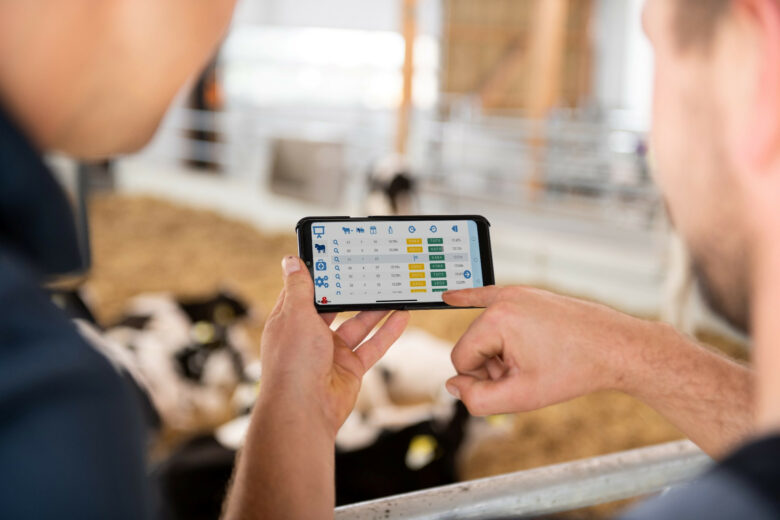
Weight information makes selection possible
At the end of rearing, you obtain valuable information about the development of each individual calf. This will help you make important decisions about which female calves should supplement your herd of dairy cows and which animals should be sold due to poor growth.
Useful features
Whether it’s a clearly visible display, milk dispensing valve or ammonia sensor: The HygieneStation offers a number of technical features that make everyday work easier and contribute to healthy calf rearing.
HygieneStation display
Whether mounted directly on the HygieneStation or on the wall, the display shows relevant information about the calf in the calf group. The calf number is displayed in very large digits, making it very easy to read, even from a distance. In addition, the display can be used to prepare and feed an extra mixture directly or to transfer it to a bucket.
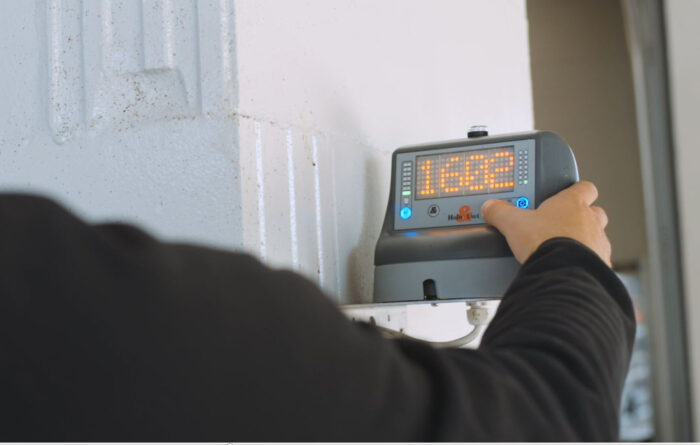
Credit and alert status
At the push of a button you can also have the calf numbers of the credit or alert list displayed sequentially. This means it is no longer necessary to move constantly between the calf pen and the CalfExpert display. You can read off the remaining quantity conveniently and estimate how much longer the current visit is going to take. The alert status is also easy to recognize on the basis of a scale.
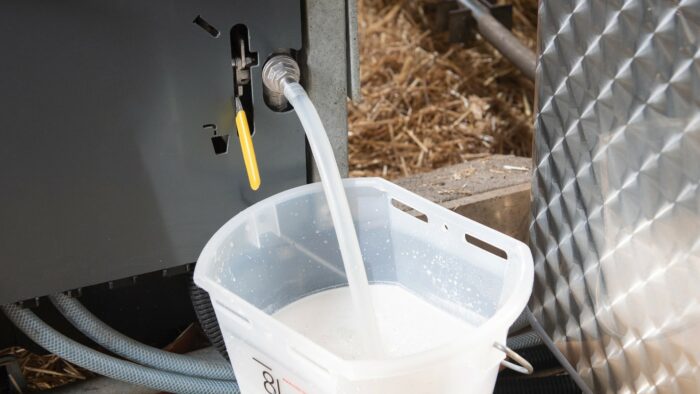
Milk pump valve
The possibility of triggering extra mixes at the CalfExpert is a great advantage if the milk can be run off conveniently straight into a bucket. At the milk pump valve you can decide whether a calf is to be fed in the station or the milk is to be pumped straight into a feeding bucket.
